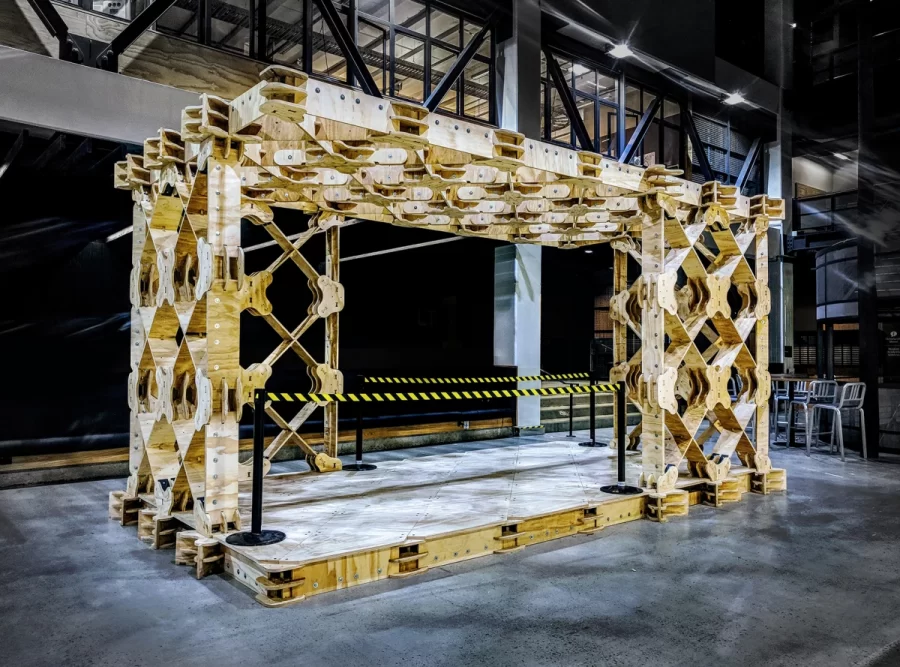X-Frame: The Houses of the Future
Global construction waste is expected to reach 2.2 billion tons by the year 2025.
Think about that for a moment. The weight of every single elephant in the world (50,000), every single cat (stray and domesticated) in the world (600 million), every single fish in the world (327,558,240,600,000), and every single blue whale in the world (20,000) added together is only about 1.5 billion tons. That’s only 3/4 of how much construction waste there will be in three years.
600 million tons of C&D (construction and demolition) debris was generated by the US in 2018 alone. 145 million tons of that debris (roughly 24%) were disposed of in landfills, which are literally enormous dumps for garbage.
Basically, the construction industry needs to rapidly cut back on its non-reusable materials that just go to a dump to die once they’ve been used once. The best (and smartest) way to do that will most likely be to create a new method of construction, one where you can reuse your materials as many times as you need to.
Enter X-Frame, a wooden, self-braced, interlocking system that clips together. This eliminates the need for single-use fixings. Because of how versatile it is, you could literally ‘unclip’ a room from your house and take it with you when you move out. This will also make construction and expansion of structures much quicker and easier, with houses being built in a couple of days.
But don’t think that this means that there will be more construction waste. Quite the opposite, in fact. X-Frame’s goal is to create a future where all sections of any given building can be easily disassembled and reused, quickly and effectively making construction waste obsolete and minimizing the amount of materials used by the construction industry.
Here is an excerpt from an interview that the news source Interesting Engineering had with Ged Finch, a Ph.D. candidate in the School of Architecture at the Victoria University of Wellington (in New Zealand), and the brains behind X-Frame.
Interesting Engineering: What’s the idea behind X-Frame?
Ged Finch: X-Frame is a response to the need to create a way of building that better allows materials to be disassembled and then reused on another building site. The principle that we have behind it is that everything needs to be able to be taken out of the building without being damaged, and we need to achieve as much utilization or as much value of that material as possible.
X-Frame does this by taking standardized building elements and separates the layers of a building into interchangeable layers that can be easily prefabricated, moved, standardized, and reused in other buildings.
IE: Can you explain the benefits and challenges of this idea?
GF: One of our key focuses was how to design a structural system that allows all the layers of the building to be deconstructed. One challenge is dealing with how to effectively standardize parts so that [they] can be easily used across many buildings, as well as how to make these parts robust across those use cycles. So, while we want these things to last as long as possible, we don’t want to utilize materials that use a lot of carbon.
We’ve spent a lot of time finding an appropriate material. We use engineered wood products to do that since they are more durable. Timber also has the appropriate negative carbon impact on the environment and doesn’t produce a whole lot of carbon.
Another part of that is dealing with reused elements, as there’s a big perception in many sectors, particularly in the fit-out of commercial buildings, that reusing materials is unattractive. So, we had to create a system of parts that can be reused without looking recycled, secondhand, or recovered. The notion of a reuse economy not being attractive to people — it’s been one of the biggest challenges.
I’d like to see an industry-wide effort to standardize some fundamental parts of what we do. I don’t think this would be too ambitious. We could make collective decisions about the materials we use, as well as their sizes and dimensions, heights, and links, that would allow us to transition to a circular economy much more quickly.
IE: What’s your next big idea?
There are numerous other reusable technologies that can be wrapped around X-Frame. For example, we are looking at reusable modular cladding systems and internal lighting systems, as well as the utilization of waste in products and a slew of other materials to help fuel a circular economy.
There’s lots of other stuff coming, all with the aim of making construction as sustainable as possible.
IE: What advice would you have for young people looking to have a career in the construction industry?
I believe that the change that’s happening in the construction industry, both in terms of advancing technologies and the push toward sustainability, makes it one of the sectors where you’ll be able to have a significant impact on people’s lives and see and feel that impact. That’s even more reason to be involved, study in universities, and get your hands on materials, products, and new technologies as soon as possible. They could really change people’s lives fundamentally.
So in three years, maybe there won’t be elephants, cats, fish, and blue whales’ worth of construction waste. Maybe things can be different. And maybe, when you grow up and move out to college, you just might be able to unclip your bedroom from your house and take it with you. The houses of the future have arrived!
RELATED STORIES:
https://interestingengineering.com/innovation/architect-explains-we-should-rethink-build-homes
https://www.tyrtactical.com/faqs/how-do-i-size-my-xframe-stays/
TAKE ACTION:















